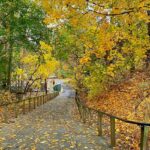Monuments in Iran reflect centuries of architectural styles, dynastic influences, and regional craftsmanship across the country. Iran, located in Western Asia, is known for its well-preserved archaeological complexes and detailed Islamic architecture. Its historic structures span from Achaemenid ruins to Qajar-era palaces, offering insight into political and religious traditions. Many sites remain UNESCO-listed, and some continue to serve cultural or religious purposes for local communities. Each site offers a distinct historical narrative rooted in the ancient civilisations that once thrived across Persian lands.
Top 10 Monuments In Iran To Visit
This is the list of 10 Monuments in Iran that display an unmatched architectural variety and rich historical background, attracting history lovers and cultural scholars.
1. Persepolis

Persepolis offers insight into the ceremonial structure and political symbolism of the Achaemenid Empire. Built by Darius I, it featured spaces designed to project imperial authority to regional delegates. Its monumental architecture reflects skilled craftsmanship and administrative precision, not merely decorative intent. Relief carvings depict tributary processions, reinforcing order and hierarchy. Archaeological findings suggest its role in hosting seasonal rituals like Nowruz. It is one of the famous monuments in Iran among scholars and history buffs.
Major Attractions: Gate of All Nations, Apadana Palace, Hall of 100 Columns
Timings: 8 AM – 5:30 PM
Entry Fee: IRR 500,000 / ₹1010
2. Naqsh-E Jahan Square

Photo: Necati Ömer Karpuzoğlu / Pexels
Naqsh-e Jahan Square reflects how public spaces were structured to integrate governance, commerce, and faith. Constructed under Shah Abbas I, the square’s geometry promotes social interaction while expressing the centralised vision of Safavid leadership. Architectural harmony between religious buildings and administrative structures shows a strategic approach to unity. Daily markets and equestrian events once filled the square, making it essential to Isfahan’s civic life. Today, its design continues to influence urban studies related to Persian city planning, and it is one of the significant historical monuments in Iran.
Major Attractions: Shah Mosque, Sheikh Lotfollah Mosque, Ali Qapu Palace
Timings: 9 AM – 6 PM
Entry Fee: IRR 300,000 / ₹600
3. Golestan Palace
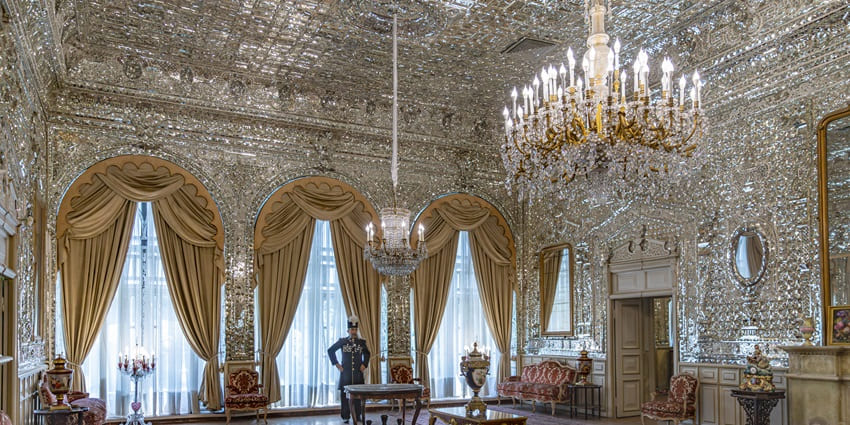
Photo: Ninara / Wikimedia Commons
Golestan Palace, one of the recognised significant monuments in Iran, captures Tehran’s transition from classical Persian to Qajar modernity. Its tiled facades and mirrored halls speak to changing royal tastes influenced by European contact. Decorative motifs blend native symbolism with imported aesthetics, offering visual evidence of 19th-century global exchanges. The palace complex included administrative offices and ceremonial spaces, making it central to royal activity. As a preserved institution, it educates visitors on Qajar governance, their cultural affiliations, and the early roots of Iran’s formal architectural preservation efforts.
Major Attractions: Marble Throne, Shams-ol-Emareh, Museum Hall
Timings: 9 AM – 4.30 PM
Entry Fee: IRR 400,000 / ₹800
4. Jameh Mosque Of Isfahan
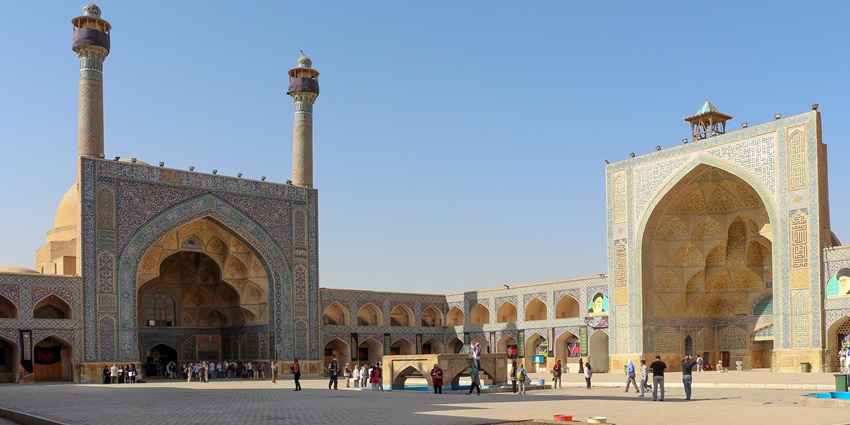
Photo: Bernard Gagnon / Wikimedia Commons
The Jameh Mosque of Isfahan presents more than a sacred space—it documents centuries of innovation in Iranian religious architecture. Its multi-era construction offers a comparative study for scholars tracing regional stylistic transitions. The mosque’s four-iwan layout later influenced designs throughout Islamic architecture. Decorative brickwork and intricate domes display regional material use and spatial planning. Regular congregational gatherings have sustained their relevance over time. Its historical endurance and aesthetic appeal make it one of the famous monuments in Iran.
Major Attractions: Four-Iwan layout, Nizam al-Mulk Dome, Seljuk minarets
Timings: 9 AM – 5 PM
Entry Fee: IRR 200,000 / ₹400
5. Shah Cheragh
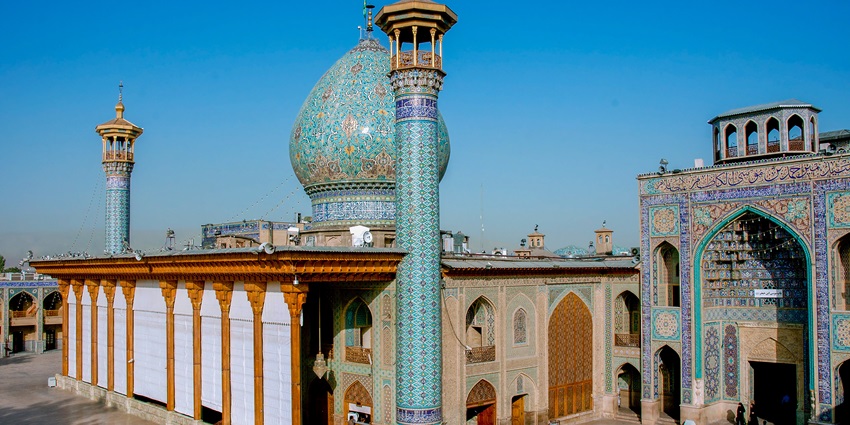
Photo: Arosha-photo ( Reza Sobhani) / Wikimedia Commons
Shah Cheragh stands as a significant spiritual centre for Shia devotion, drawing both pilgrims and scholars. Its reflective interiors enhance ceremonial rituals and create a visual rhythm with intricate mirror work. Apart from its religious importance, it plays a civic role in Shiraz by hosting educational and charitable events. The structure’s historical restoration under Queen Tashi Khatun shows the influence of female patronage in Islamic architecture. Continuous community interaction has made it a cornerstone of local life, where history, theology, and social tradition intersect in one location. Hence, it is one of the best monuments in Iran to explore.
Major Attractions: Mirror-tiled interiors, dome and minarets, tombs of Ahmad and Muhammad
Timings: 24*7
Entry Fee: Free
6. Nasir Ol-Molk Mosque
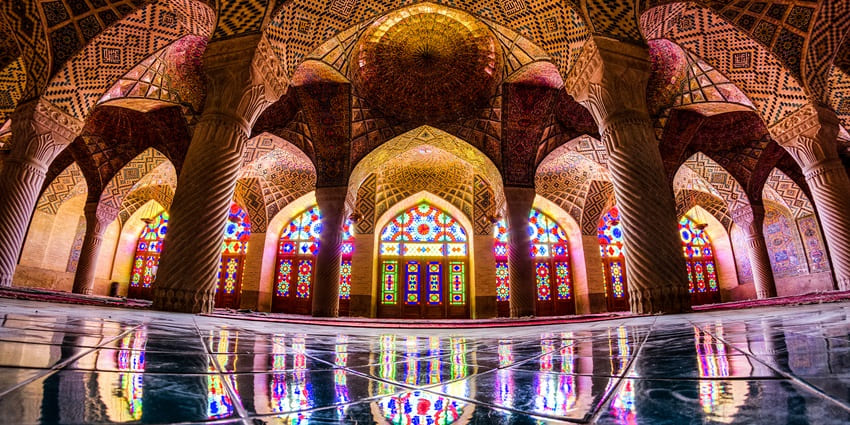
Photo: MohammadReza Domiri Ganji / Wikimedia Commons
Nasir ol-Molk Mosque offers a distinctive interaction between architecture and natural light. As sunlight filters through colored glass, it alters the interior hourly, creating an experience that changes with time. The use of floral tiles and careful window placement indicates an advanced understanding of solar patterns and aesthetic timing. Its unconventional interior has gained academic interest for studies on lighting in sacred architecture. The mosque’s enduring popularity among photographers and designers makes it one of the famous monuments in Iran.
Major Attractions: Stained glass prayer hall, tile work, muqarnas ceiling
Timings: 7 AM – 5 PM
Entry Fee: IRR 300,000 / ₹600
7. Naqsh-E Rostam
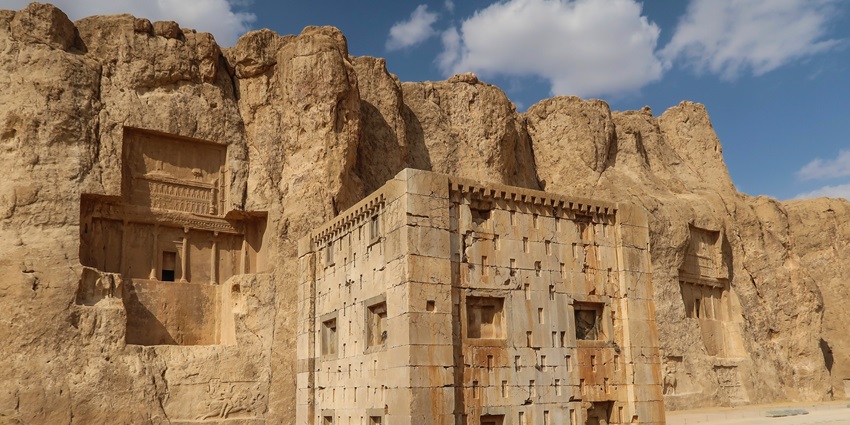
Photo: Maasaak / Wikimedia Commons
Naqsh-e Rostam serves as a historical archive carved in stone. The tombs and reliefs narrate royal authority and divine association across successive Persian empires. From Achaemenid burial chambers to Sassanian battle carvings, the site merges political ideology with spiritual beliefs. Located near Persepolis, it likely contributed to ceremonial routes. The location of tombs above ground level was a symbolic gesture to separate rulers from earthly decay. Researchers continue to analyse these carvings for insights into power dynamics and ideological continuity across Persian monarchies.
Major Attractions: Tombs of Darius I, Sassanid rock reliefs, Ka’ba-ye Zartosht
Timings: 8 AM – 6 PM
Entry Fee: IRR 500,000 / ₹1010
8. Kharraqan Towers
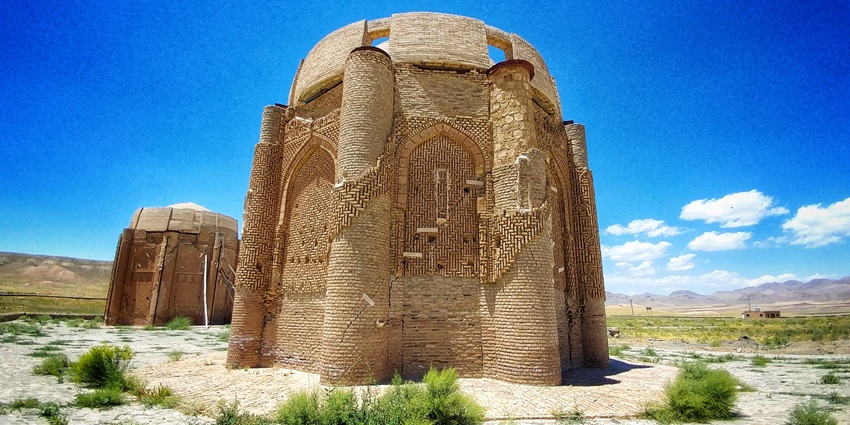
Photo: AlChtzn / Wikimedia Commons
The Kharraqan Towers exhibit early Islamic advancements in architectural geometry and earthquake resistance. Built during the Seljuk era, their structural form combines mathematical design with spiritual purpose. The towers’ ornamentation includes Kufic inscriptions and patterns that represent both art and scripture. While they house noble burials, their primary value today lies in engineering studies and historical preservation. These towers provide context for medieval Persian innovations in dome construction and symmetry. Their longevity through seismic shifts makes them valuable for research into pre-modern structural resilience.
Major Attractions: Dome chambers, Kufic inscriptions, geometric brick patterns
Timings: 8.30 AM–6 PM
Entry Fee: IRR 150,000 / ₹300
9. Shahshahan Mausoleum
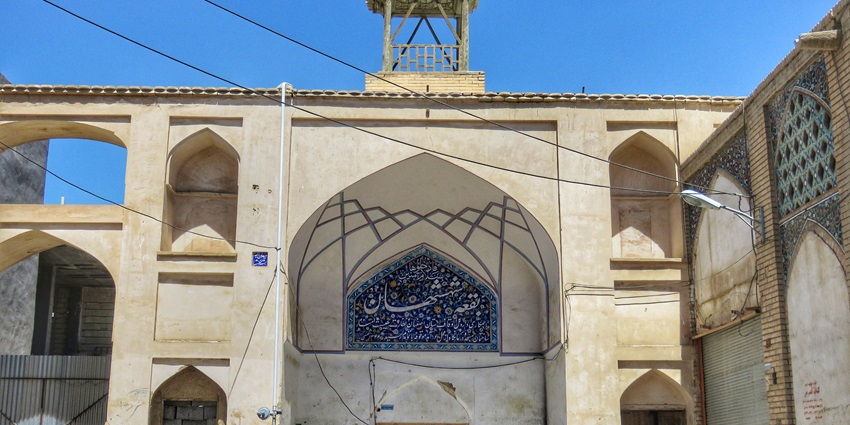
Photo: NH photograph / Wikimedia Commons
Shahshahan Mausoleum, part of the recognized historical monuments in Iran, reflects the devotion and architectural sensitivity of the Timurid period. Commissioned by a royal patron, its tiled surfaces carry inscriptions that combine religious reverence with artistic refinement. This structure, though less visited, presents examples of Timurid scriptwork and dome design, often overlooked in major heritage sites. It served both commemorative and spiritual purposes, housing a respected cleric. Its preservation enriches understanding of minor but symbolically significant structures that shaped religious expression during the late medieval period.
Major Attractions: Glazed tiles, epigraphic decoration, domed chamber
Timings: 9 AM – 5 PM
Entry Fee: IRR 200,000 / ₹400
10. Chogha Zanbil
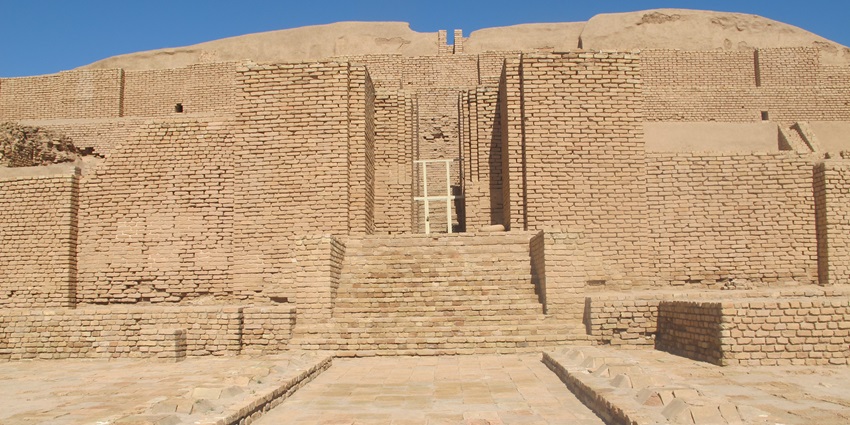
Photo: Atsed / Wikimedia Commons
Chogha Zanbil offers a rare glimpse into Elamite urban planning and spiritual architecture. As a ziggurat built outside Mesopotamia, it presents structural features uncommon in nearby regions. Its multi-level form was aligned with religious hierarchy and celestial observation. The presence of drainage systems and outer defensive walls highlights technical planning alongside religious function. Archaeological excavations have uncovered artefacts that deepen knowledge of Elamite ritual practices and regional governance. The structure’s continued study helps reconstruct forgotten aspects of ancient civilisation that thrived in southwest Iran before Persian dominance.
Major Attractions: Ziggurat base, Elamite inscriptions, city walls
Timings: 8 AM – 6.30 PM
Entry Fee: IRR 400,000 / ₹800
Monuments in Iran offer a detailed look into centuries of cultural, religious, and architectural development shaped by different dynasties. These historic sites range from ancient palaces and domes to detailed inscriptions and carvings that highlight craftsmanship and symbolic meaning. Explore more such packages offered by TripXL and discover these enduring landmarks to gain a deeper appreciation of Iran’s architectural legacy.
Cover Photo: Bernard Gagnon / Wikimedia Commons


 WhatsApp
WhatsApp
 Twitter
Twitter



